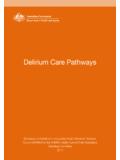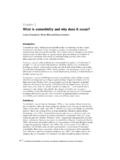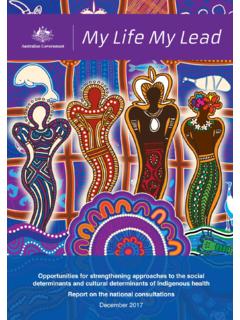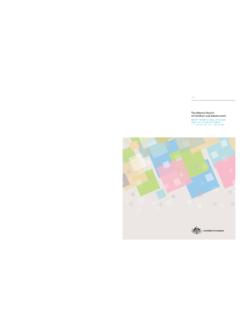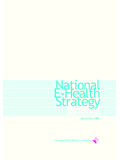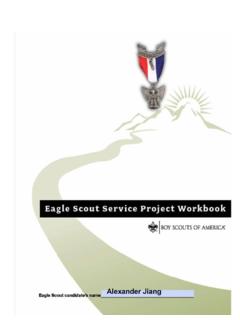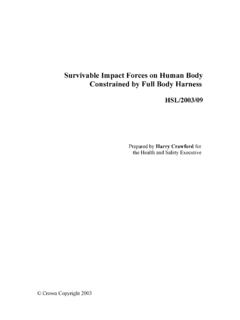Transcription of PROJECT PROPOSAL DEVELOPMENT OF FOOTBALL IN …
1 PROJECT PROPOSAL DEVELOPMENT OF FOOTBALL IN WEST SYDNEY FOOTBALL Federation Australia (FFA) submits the following PROPOSAL for a PROJECT for the DEVELOPMENT of FOOTBALL in the Western Sydney region of NSW ( PROJECT ). Background to the PROJECT FFA is the governing body for FOOTBALL in Australia. Under its Constitution FFA has a number of objects, which relevantly to the PROJECT include: Controlling the strategic direction of FOOTBALL in Australia; Determining the highest level policy for the conduct and management of FOOTBALL in Australia; Fostering friendly relations among the officials and players of FOOTBALL by encouraging FOOTBALL games at all levels; Taking all reasonable steps to ensure that discrimination or distinction does not occur among FOOTBALL participants on any grounds regulated under any Equal Opportunity Law Securing and maintaining affiliation with other bodies, domestic and international, having a common interest in FOOTBALL ; and Promoting, providing for, regulating and ensuring the effective management of FOOTBALL tournaments and games under the control of or authorized by FFA.
2 FFA gives life to its constitutional objects through a strategic plan and organizational structure which encompass the three strategic priorities and drivers of the future growth and success of the game, namely success of the representative men s and women s national teams, led by the Socceroos and Matildas; a strong professional national league and a national FOOTBALL DEVELOPMENT program covering both talented player identification and grassroots FOOTBALL . In implementing its strategic plan, FFA works with a range of key stakeholders, the two principal groups being its state and territory member federations who administer community FOOTBALL within a national framework in each of their states and territories and the A-League clubs. All three drivers or platforms for the game s successful future are interrelated and dependent upon each other, with the Hyundai A-League, the national professional league, providing the central link.
3 Since its inception in 2005, the A-League has been recognized as a pivotal component in ensuring the success and growth of FOOTBALL in Australia by providing: A vehicle to galvanise and unite local communities around a common interest; role models for young people to participate in exercise and organized team sports; the vital stage in the player pathway for talented junior footballers on their way to international representation; the opportunity for DEVELOPMENT and promotion of women s and youth FOOTBALL through the Westfield Women s League and National Youth League; an opportunity for international engagement through club participation in such competitions as the Asian Champions League and FIFA Club World Cup. The above is achieved by and through the clubs which because of their structure, presence and localized footprint can form an essential part of the fabric of their local communities in a way that national representative teams do not.
4 FFA recognizes the critical importance of close engagement and integration between clubs and their local communities in delivering the well-recognised social, health and community benefits that flow from community participation in and support for sporting teams and competitions. FFA notes that this was a key finding of the Smith Review into FOOTBALL conducted on behalf of the Australian Government by the Hon. Warwick Smith AM. This review identified the importance of integration between A-League clubs and their communities and forging a connection, formal linkages and DEVELOPMENT pathways with junior, intermediate and top tier competitions . Further it advocated close working relationships between clubs and State Territory federations to establish mutually beneficial arrangements for the good of the game . The Smith Review specifically identified the strong participation base at the grassroots level in Western Sydney, noting it has 137,000 participants.
5 Western Sydney is a very important area for FOOTBALL and sport generally. It represents a major population base in Australia with: 175 clubs six major grassroots FOOTBALL associations Granville, Nepean, Blacktown, Southern Districts, Macarthur and Bankstown more than 30% of registered participants in the FOOTBALL NSW jurisdiction located in western Sydney 50% of all Socceroo representatives in the modern era came from western Sydney or played a significant proportion of their club career in the area 40% of all current A-League players came from western Sydney or played a significant proportion of their club career in the area Accordingly FFA seeks through the PROJECT to contribute to the DEVELOPMENT of FOOTBALL in Western Sydney and to the delivery of these benefits through the establishment of a framework centred around the new A-League, W-League and NY League teams club in the region.
6 More particularly FFA seeks to make the new club a model within the sport of FOOTBALL (and possibly for other sports) through establishing a framework that will ensure that thea new club that has at the heart of its culture and operations a respect and value for the importance of community input, involvement and engagement. PROJECT The Aim of the PROJECT is to contribute to the DEVELOPMENT of FOOTBALL in Western Sydney thereby delivering the social, health and community benefits that are well-recognised as flowing from community participation in and support for sporting teams and competitions. PROJECT Objectives Through the establishment of a framework around the Club and using the Club as the vehicle, the objectives of the PROJECT are to deliver short, medium and long-term community building, social health and welfare benefits by: providing young people in Western Sydney role models for participation in exercise and organised teams sports, encouraging and growing the rates of participation in FOOTBALL at all ages, levels and across gender in the Western Sydney region; providing potential FOOTBALL players in Western Sydney an aspirational pathway for a professional FOOTBALL career and/or fulfilment of their individual sporting potential.
7 Providing future coaches and other technical FOOTBALL staff and sporting administrators in Western Sydney an opportunity to pursue a career path in their chosen sport and profession within their local community; providing the Western Sydney community with volunteer and employment opportunities based around support for their Club; providing an economic stimulus to the region through the trade and commerce, tourism and employment benefits of operating a club and regular sporting events; providing the people of Western Sydney a forum to foster and grow their community spirit and pride through their shared support of their own local club. Achieving the Objectives The PROJECT aims to achieve the above Objectives through the following measures: firstly engaging the local community from the outset in DEVELOPMENT of the Club s culture, strategic direction, identity and brand.
8 Measures involve holding community forums and polls on such matters as the location of the club s home ground, the club s name, colours, core values, ethos and playing style. As at the date of this PROJECT Submission, seven community forums have been held at seven locations across Western Sydney and online polls and public media polls have been held to canvas the community s input into these matters. The results are largely shaping the DEVELOPMENT by external specialists of a club brand including vision, name, team colours, brand values as well as informing the selection of playing stadium and recruitment of players. Secondly once the club is established, particularly with coaching staff and players on board, it will be a defining aspect of the club to engage with the local community on a regular basis through its key representatives. The recent appointment of the Executive Chairman reflects this, as the individual engaged is recognized within FOOTBALL as the leader in the field of establishing a club with community-based values.
9 Another example is that the Head Coach will be based in West Sydney and participation in community engagement activities, beyond the technical role of coaching the team, is emphasized as a major obligation under his employment contract. Similarly the recruitment of players will be based on not just their playing ability but their adoption of the club values and their aptitude and willingness to embrace the community engagement ethos. This will be reflected expressly in special conditions to be inserted into playing contracts requiring all players to participate in such activities. A key recruitment for the Club will be a Community Engagement specialist who will under the direction of the Executive Chairman develop a community engagement program based around a range of measurable key performance indicators, primarily involving the playing and coaching staff in a range of community activities, school, hospital and local club visits, conduct of coaching and skills clinics.
10 A relevant factor in recruitment of key coaching and other staff will also include their adoption and adherence to club values. For example, the Head Coach was raised in West Sydney and as a successful player at both international club and Socceroos level and now as head coach provides a very tangible role model for aspiring young players and coaches to strive to meet their potential and live their dreams. Recognising and embracing the diverse multicultural heritage of the region will also be a core component of not only the club s values but also its way of operating. The Community engagement officer will be required to include in DEVELOPMENT of the community engagement plan (referred to above) discrete programs relevant to engagement with the CALD and indigenous communities within the region. Having engaged the community in the initial stages of the club s establishment through the forums and polling noted above, on an ongoing basis, opportunity will be provided for ongoing input.
